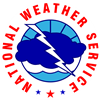Overview
A series of powerful upper level systems affected the combined Panhandles during the month of March. With each event, high winds, blowing dust, and critical fire danger were a prevalent threat. The first of these systems began on Monday, March 3rd. That day, the strongest wind gusts in excess of 58 mph were confined to the central and western Texas Panhandle. The highest wind gust measured was 69 mph around Dalhart, TX. The most notable fire was located just southeast of Pampa, TX when drier air move into the area while strong winds continued after dark. Strong winds continued on the 4th along with some light rain and snow in the morning. By Friday, March 14th, the next system brought in high winds early in the morning and lasted through the afternoon. As day time heating progressed, much higher winds began to flow down to the surface, leading to a historic event with wind and dust. A record breaking wind speed of 83 mph was measured by the Amarillo Airport ASOS (the only higher recorded wind speed was associated with a tornado). The high winds created problems for high profile vehicle such as tractor trailers and semi-trucks, and also caused dangerous travel conditions as visibility fell below 1/4 of a mile due to blowing dust. The blowing dust lead to multiple accidents including a pileup south of Canyon. Multiple fires impacted the combined Panhandles with a couple of these fires impacting residents of around Alanreed and McLean, TX. Fire Warnings had to be issued to prepare local residents for potential evacuation. Finally on March 18th, we had our last high wind, blowing dust, and extreme critical fire danger event of the month. Strong winds and multiple wildfires occurred on the day of the 18th. Fire Warnings were issued in Dallam county for a fire on the north side of the county, and in Hutchison county when a fire broke out on the west side of Borger. The strongest winds actually transpired overnight into the early morning hours of the 19th due to a meteorological feature that moved across the region called a sting jet. This extratropical cyclone and associated sting jet brought strong +70 mph winds overnight and strong winds continued into the 19th alongside critical fire danger until relative humidity values finally recovered later in the afternoon.
March 3rd & 4th
Photos & Video
 |
 |
| Hazy sky due to dust (Aaron Ward) |
Dust lofted in the air (Aaron Ward) |
Storm Reports


Environment
The first system, though not as strong as the ones to follow, had a large dust source region and extreme critical wildfire risk. The closed low can be seen traversing across the northern Texas Panhandle and the Oklahoma Panhandle.
 |
 |
 |
| Figure 1: Strong Upper Level Low Water Vapor Satellite View | Figure 2: Strong Upper Level Low 500 mb Heights | Figure 3: Dust Carried with the System (Shown in Pink) |
March 14th
Photos & Video
 |
 |
 |
| Multi-car pileup due to visibility restrictions from blowing dust (newschannel10) |
Strong winds accompanied by blowing dust (Joanne Culin) |
Southeastern Gray county fire (GOES-16 East CONUS Channel 7-3.90 µm Satellite View) |
Storm Reports

Environment
A very tight pressure gradient at the surface and very strong mid level jet streak allowed this system to generate historically strong winds and kick up large amounts of dust, both from within and outside the combined Panhandles. The fire risk was extremely critical and had moderate potential for a significant wildfire outbreak.
 |
.png) |
 |
| Figure 1: Strong Upper Level Low GOES GeoColor Satellite View | Figure 2: Multiple Graphs Depict an Unusually Strong Event | Figure 3: Graphicast Showing Large Plumes of Dust |
March 18th & 19th
Photos & Video
 |
 |
 |
 |
| Impact to travel due to dust (Blake Brown) |
Dust lofted in the air (Texas A&M Forest Service) |
Northern Dallam county fire (GOES-18 West Mesoscale 1 Channel 7-3.90 µm Satellite View) |
Western Borger fire (GOES-18 West Mesoscale 1 Channel 7-3.90 µm Satellite View) |
Storm Reports

Environment
The sting jet feature can be seen in all three images below, which lead to an enhancement of wind speeds across the combined Panhandles. So, what is a "sting jet"? Put simply, it's an upper level atmospheric phenomena where a back-bent cold front wraps around the center of the low pressure system and promotes enhanced winds both aloft and at the surface.
 |
(1).png) |
 |
| Figure 1: Water Vapor Satellite View showing closed low pressure system | Figure 2: Sting Jet & Dust (in Yellow) Satellite View | Figure 3: Sting Jet Surface Map View |
 |
Media use of NWS Web News Stories is encouraged! Please acknowledge the NWS as the source of any news information accessed from this site. |
 |